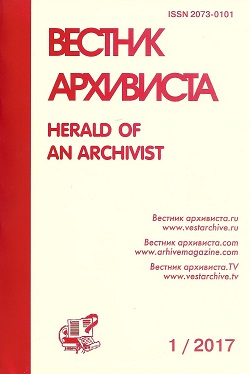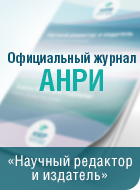| 11 June 2010
Posted in
Genealogy. Russian and foreign experience
Annotation/ Аннотация
A review of a reference book on the collection of the State Archive of the Saratov region, containing papers of the Herson roman catholic consistory.
Рецензия на справочное издание по фонду Государственного архива Саратовской области, содержащему дела Херсонской римско-католической духовной консистории.
Key words / Ключевые слова
Archives. Catholics in Russia. Church books. Genealogy. Архивы, католики в России, метрические книги, генеалогия.
Result of long-term work of the Saratov regional archive on explanatory notes perfection became, besides other, “The Annotated inventory of affairs of fund of the Kherson Catholic spiritual consistory” *.
Orthodoxy was the basic faith of the Russian empire. At the same time Islam, Catholicism, Protestantism existed in territory of Russia long since, and were, more often, creeds of concrete nationalities. Poles were Catholics; however the part of German, Lithuanian, Belarus and other ethnoses adhered to Catholicism.
By quantity of "Catholic" documents the State archive of the Saratov region can be compared only to the Russian state historical archive in St.-Petersburg.
Fund which the given book is devoted has a difficult enough background. 1848 from the all-Russian Mogilyov has been allocated archiepiscopate to the new diocese Kherson. The decision it has been proved by necessity to serve far from Petersburg and Mogilyov, but by then numerous churches of the Kherson, Ekaterinoslavsky, Taurian, Saratov, Astrakhan provinces, Bessarabsky area, the Caucasian and Transcaucasian edges. 1852 the centre of the Kherson diocese has been transferred to Tiraspol on which began to be called the bishop, a diocese and a consistory.
But it was soon found out that the new site has been chosen unsuccessfully, small district Tiraspol had even no church, and 1856 the centre of the Tiraspol consistory is translated to Saratov.
To Saratov all documents of the former Kherson consistory (1848 – 1856) and the dean's offices which have entered into it Mogilyov province (1801 – 1848) have been translated.
2008 business of incorporated fund have been united and processed by a chronologically-nominal principle: on years, in annual section by kinds of documents.
On the first place in each year the extracts most interesting to users (actually copies) registers of births with records about a christening, wedding, burial service of Catholics of the specified provinces and areas of the Russian empire.
Then go not numerous enough sheets. Audits following sheets contain the valuable historical data: a place of construction of church, its internal furniture, quantity of parishioners etc.
On the third place – the affairs reflecting internal affairs of communities: searches of the run away wives and husbands, divorces, wills, repair of old church buildings and erection of the new. In the end of annual sections it is possible to find and lists of parishioners (for example, in business 407 – lists of parishioners of churches of the Astrakhan, Samara, Saratov provinces for 1852 on 528 sheets).
The help device of the inventory is almost exemplary. Besides the preface filled with the facts (with. 3 – 9) are available: the list of special terms, definitions (with. 10 – 13); the list of Catholic churches of the Tiraspol diocese on dean's offices for January, 1st 1878 (with. 118 – 125), the list of Armenian-Catholic churches of the Transcaucasian edge entering into the Tiraspol diocese, on dean's offices (with. 126 – 127), the list chaplains military arrivals (with. 128), geographical (with. 128 – 144) and nominal (with. 144 – 145) indexes. After heading of each business there is short «an internal inventory» with transfer of arrivals materials on which are available in business.
The publication of the inventory with numbers of affairs is a phenomenon, unfortunately, very rare in modern archival science. Meanwhile such books or Internet directories up to numbers of affairs give the chance to familiarize most in detail with the fund maintenance distantly. In a Soviet period the question of inclusion of the detailed summary of fund or its removal in the short list in last part dared taking into account ideology. But also now at drawing up of the habitual guidebook to archive selection of about what to tell in the fund characteristic, is given to concrete composers and editors, their tastes and the concepts which are distinct from the user.
It is possible to name the book safely a gift to users – both to professional historians, and fans of genealogy.
*Аннотированная опись дел фонда Херсонской римско-католической духовной консистории. 1801 – 1864 / Сост. Г.П. Корсукова и др. Ред. Н.И. Широва и др. Саратов: Научная книга, 2008.














